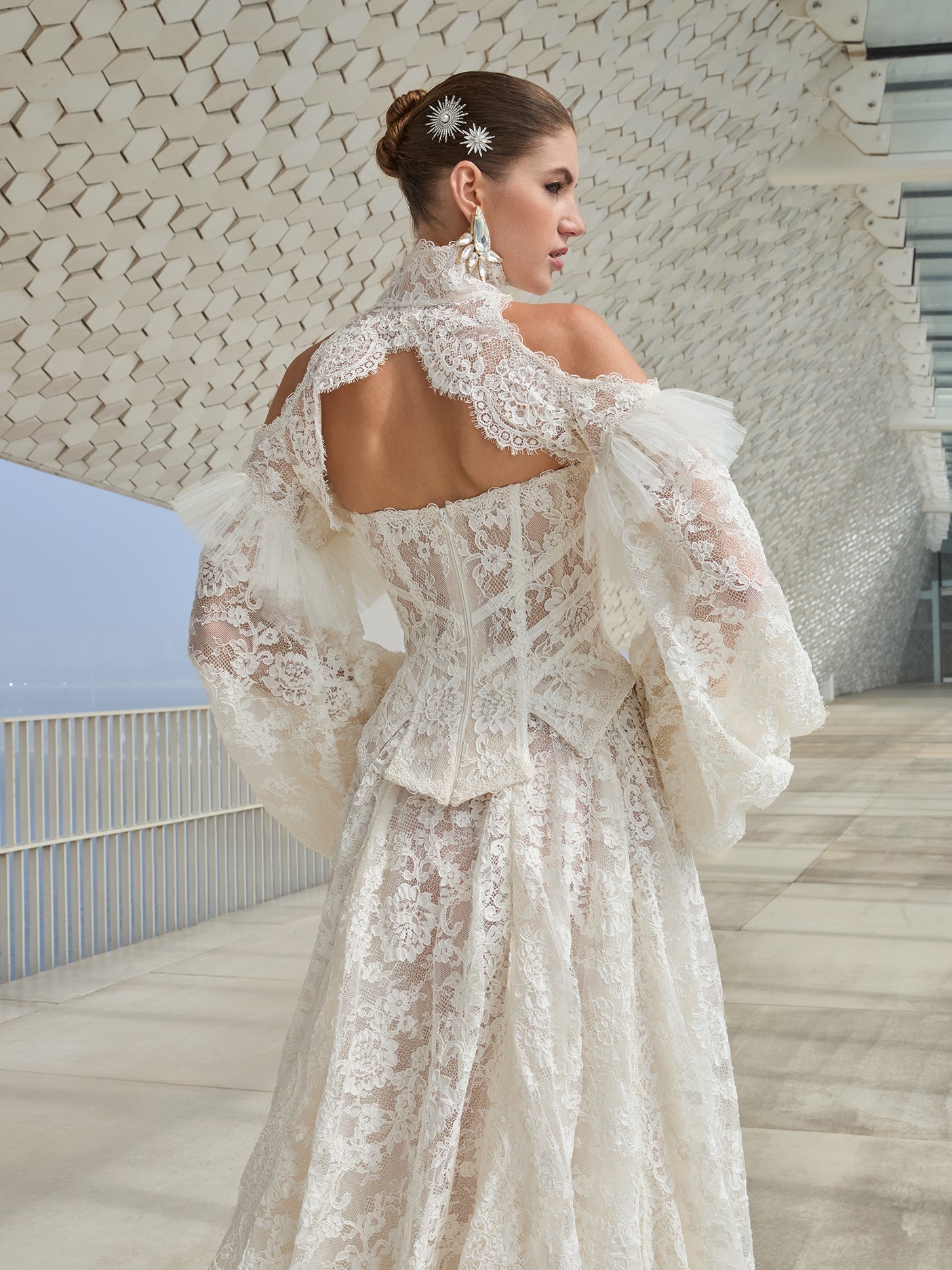
The Evolution of Waistlines
Written By Stephanie Cain
February 22nd, 2025
When it comes to wedding dresses, the waistline is one of the most defining features. From ball gowns to minimalist shift dresses, the shape and placement of the waistline can transform a bride’s entire look.
But waistlines are hardly just about needles and pins. While bridal gowns may be in a salon all their own, their connection to the wider fashion of each generation tells a story of how weddings—and their brides—mirror the broader social trends of each era. Whether it's the flowy simplicity of an Empire waist dress or the structured corsets of a Basque waist gown, waistline style tells the story of cultural values.
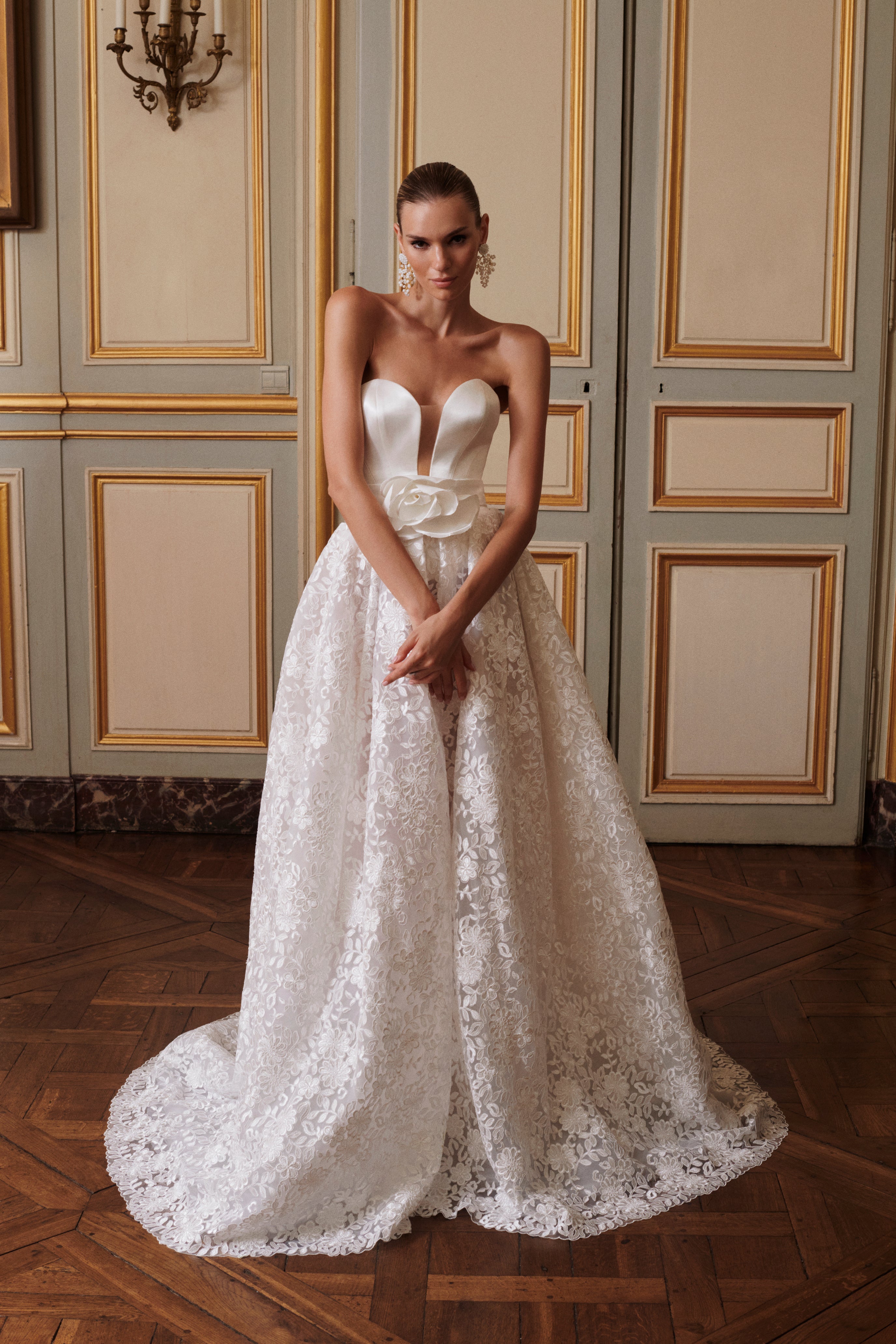
Empire Waist
Calling all Bridgerton fans!
At the dawn of the 19th century, a.k.a. the Regency Era, bridal fashion was heavily influenced by the Empire style, which originated in France under Napoleon’s rule. The Empire waistline, positioned just below the bust, created a long, flowing silhouette that emphasized the natural curves of a woman’s body.
This high-waisted design was a reflection of the society’s neoclassical inspirations, where women’s fashion was all about light, airy fabrics and a graceful, understated look. That easily translated to weddings, with white gowns made of muslin or silk and embellished with delicate lace and ribbons.
Think: Daphne’s gown when she married the Duke. And to this day, brides still love this ultra-feminine style.
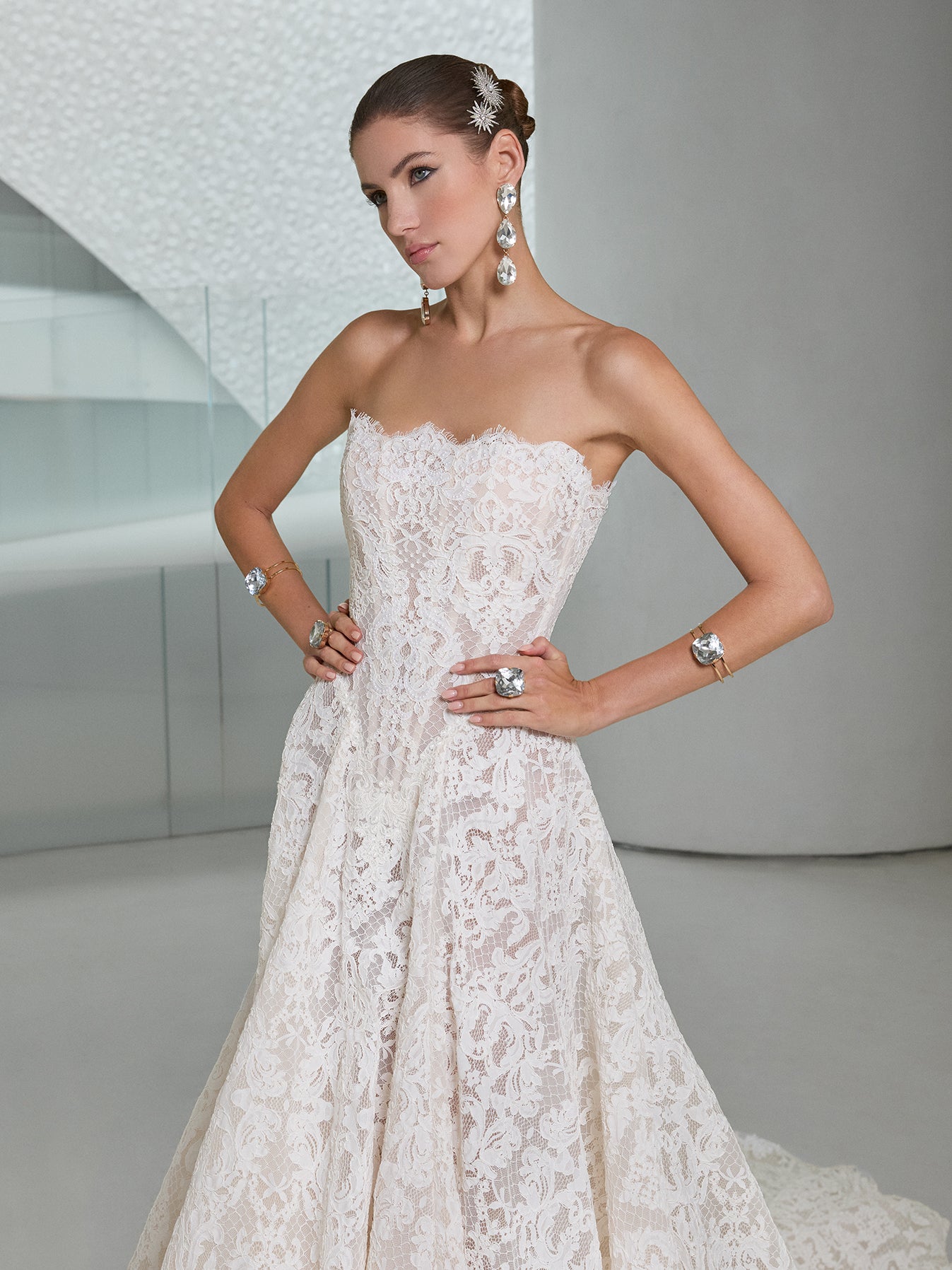
Corseted Waist:
As the times shifted into the Victorian era of the late 19th century, fashion underwent a dramatic shift toward more structured and elaborate styles, with corsets and tight waistlines that gave way to voluminous skirts.
Wedding dress styles became more ornate, featuring intricate lace, heavy silks, high collars, and long trains that reflected the great wealth and intellectual advancement of the times.
This structured waistline created an exaggerated hourglass figure for women, which has lasted as one of the most alluring silhouettes for women. Bridal gowns took note, as they do today, and the formality of the Victorian era fashions still symbolize modesty, high status, and tradition.
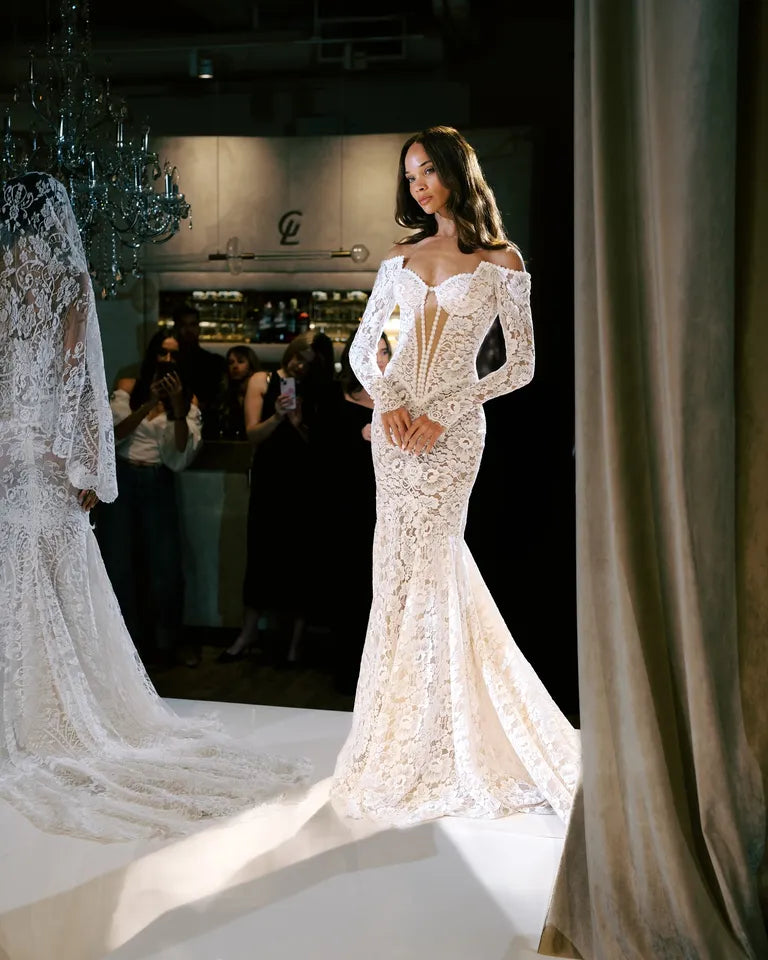
Basque Waist
Nearing the turn of the century, the evolution of the hourglass figure peaked with the Basque waist ball gown, a popular style during the Gilded Age. The structured skirt, propped up with crinolines and petticoats, was offset by its corseted bodice which featured a deep V-shaped waistline that dipped well below the natural waist.
This striking silhouette accentuated the waistline as the focus point of the gown, enhancing the female form and adding a hint of sexuality that would foreshadow the flapper gowns of the Roaring 20s.
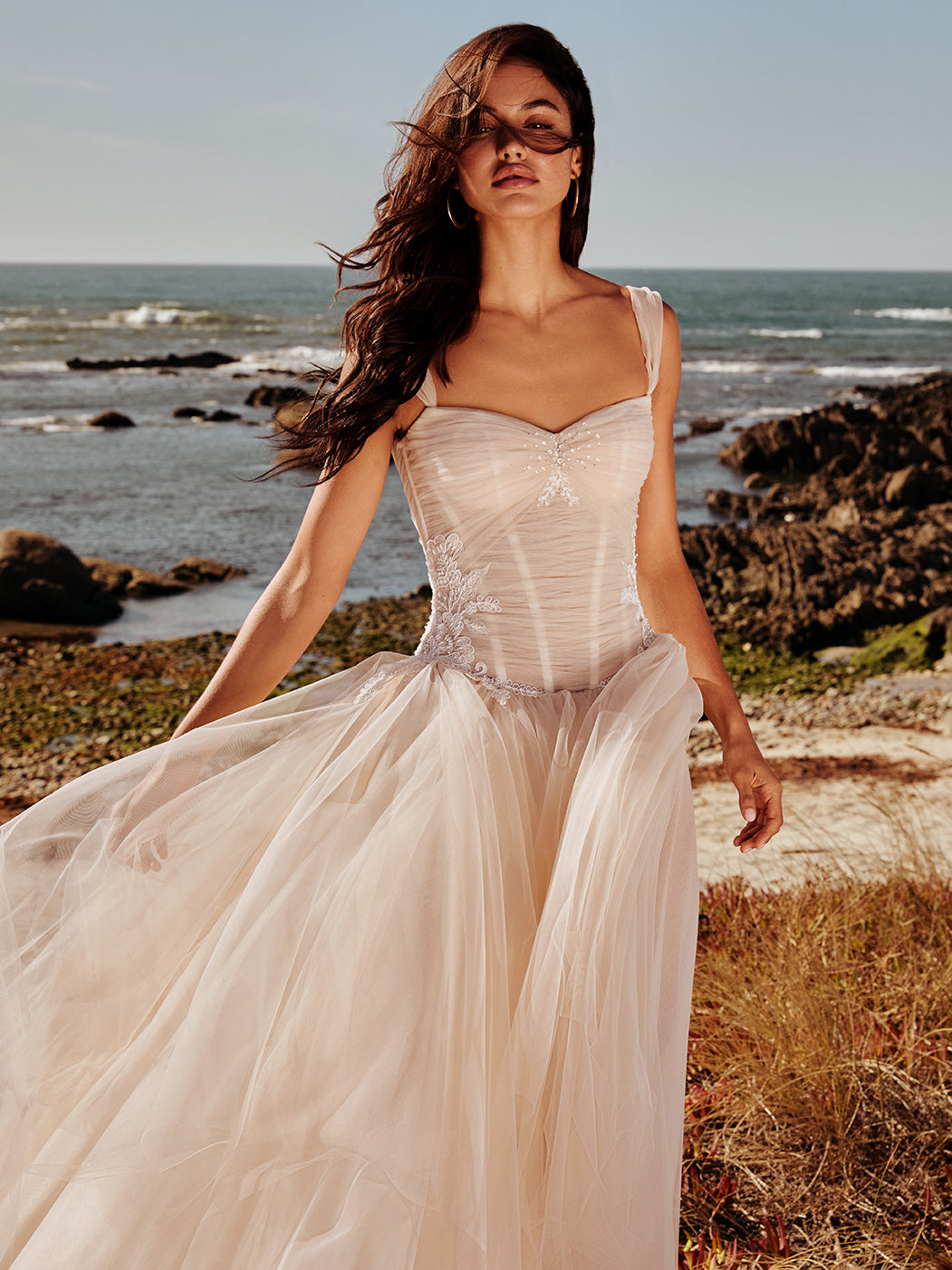
Dropped waist
By the 1920s, sex appeal was paramount in women’s fashions, and nothing said that more than the dropped waistlines of a flapper gown.
Sitting just below the natural waistline on loose-fitting dresses, the dropped waist was a sharp departure from the hourglass figure of the previous century. These dresses, complete with Art Deco influences like intricate beadwork and geometric patterns, allowed for movement and dancing.
They quickly became symbols of liberation and freedom for women, immortalized by icons like Coco Chanel and Josephine Baker. Even today, dropped waist mini dresses that hit the runway call to mind modernity, comfort, and self-expression—and, of course, afterparty.
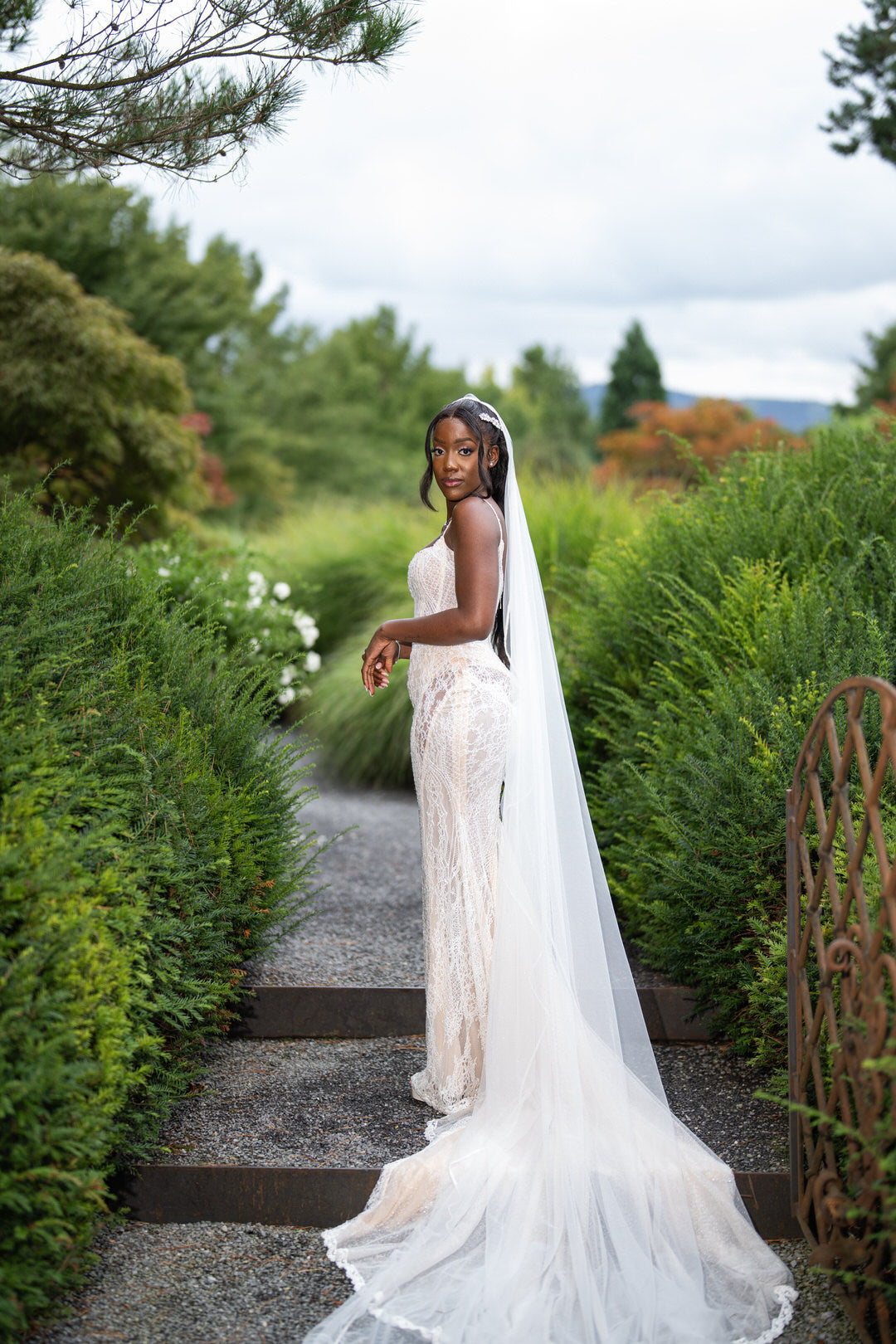
Cinched Waist
If there is one gown style that remains as popular today for weddings as it did when it launched in 1947, it’s the cinched waistline of Christian Dior’s “New Look.” This structured, feminine silhouette featured a tailored bodice with an accentuated waistline and full skirt.
The style marked a return to the hourglass figure as the romanticized ideal, and the massive amounts of fabric used on the skirt highlighted the shifting cultural sentiment from WWII rations to post-war optimism.
The wedding gowns in the 1950s and 1960s, then, were about making a statement: one of luxury and extravagance as society moved past the struggles of wartime into a moment of prosperity and bliss. There’s a reason that brides today still find inspiration in the wedding gowns of Jackie Kennedy, Grace Kelly, and Audrey Hepburn.
Thanks to its link to the good life, the cinched waist ball gowns of the later 20th century have cemented themselves as the classic blueprints for wedding dresses since.

The Evolution of Waistlines
Written By Stephanie Cain
February 22nd, 2025
When it comes to wedding dresses, the waistline is one of the most defining features. From ball gowns to minimalist shift dresses, the shape and placement of the waistline can transform a bride’s entire look.
But waistlines are hardly just about needles and pins. While bridal gowns may be in a salon all their own, their connection to the wider fashion of each generation tells a story of how weddings—and their brides—mirror the broader social trends of each era. Whether it's the flowy simplicity of an Empire waist dress or the structured corsets of a Basque waist gown, waistline style tells the story of cultural values.

Empire Waist
Calling all Bridgerton fans!
At the dawn of the 19th century, a.k.a. the Regency Era, bridal fashion was heavily influenced by the Empire style, which originated in France under Napoleon’s rule. The Empire waistline, positioned just below the bust, created a long, flowing silhouette that emphasized the natural curves of a woman’s body.
This high-waisted design was a reflection of the society’s neoclassical inspirations, where women’s fashion was all about light, airy fabrics and a graceful, understated look. That easily translated to weddings, with white gowns made of muslin or silk and embellished with delicate lace and ribbons.
Think: Daphne’s gown when she married the Duke. And to this day, brides still love this ultra-feminine style.

Corseted Waist:
As the times shifted into the Victorian era of the late 19th century, fashion underwent a dramatic shift toward more structured and elaborate styles, with corsets and tight waistlines that gave way to voluminous skirts.
Wedding dress styles became more ornate, featuring intricate lace, heavy silks, high collars, and long trains that reflected the great wealth and intellectual advancement of the times.
This structured waistline created an exaggerated hourglass figure for women, which has lasted as one of the most alluring silhouettes for women. Bridal gowns took note, as they do today, and the formality of the Victorian era fashions still symbolize modesty, high status, and tradition.

Basque Waist
Nearing the turn of the century, the evolution of the hourglass figure peaked with the Basque waist ball gown, a popular style during the Gilded Age. The structured skirt, propped up with crinolines and petticoats, was offset by its corseted bodice which featured a deep V-shaped waistline that dipped well below the natural waist.
This striking silhouette accentuated the waistline as the focus point of the gown, enhancing the female form and adding a hint of sexuality that would foreshadow the flapper gowns of the Roaring 20s.

Dropped waist
By the 1920s, sex appeal was paramount in women’s fashions, and nothing said that more than the dropped waistlines of a flapper gown.
Sitting just below the natural waistline on loose-fitting dresses, the dropped waist was a sharp departure from the hourglass figure of the previous century. These dresses, complete with Art Deco influences like intricate beadwork and geometric patterns, allowed for movement and dancing.
They quickly became symbols of liberation and freedom for women, immortalized by icons like Coco Chanel and Josephine Baker. Even today, dropped waist mini dresses that hit the runway call to mind modernity, comfort, and self-expression—and, of course, afterparty.

Cinched Waist
If there is one gown style that remains as popular today for weddings as it did when it launched in 1947, it’s the cinched waistline of Christian Dior’s “New Look.” This structured, feminine silhouette featured a tailored bodice with an accentuated waistline and full skirt.
The style marked a return to the hourglass figure as the romanticized ideal, and the massive amounts of fabric used on the skirt highlighted the shifting cultural sentiment from WWII rations to post-war optimism.
The wedding gowns in the 1950s and 1960s, then, were about making a statement: one of luxury and extravagance as society moved past the struggles of wartime into a moment of prosperity and bliss. There’s a reason that brides today still find inspiration in the wedding gowns of Jackie Kennedy, Grace Kelly, and Audrey Hepburn.
Thanks to its link to the good life, the cinched waist ball gowns of the later 20th century have cemented themselves as the classic blueprints for wedding dresses since.